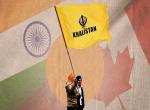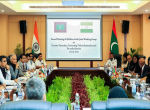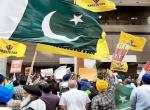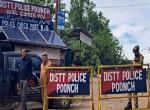Sometime during the autumn of 2012, security forces homed on to a communication between a terrorist commander in the valley with his handler based in Pakistan Occupiued Kashmir (POK). The agitated handler was egging the commander to carry out some action on security forces and even threatened to block financial support to his men who had failed to launch any significant attack. This came in the backdrop of the valley passing through two successive summers without any civilian unrest and tourist footfall touching the figure of 13 lakhs which was the highest since the outbreak of insurgency in 1989. The year 2012 was also the most peaceful in terms of casualties inflicted on security forces and civilians by terrorists.
On 19 October 2012, two to three Lashkar-e-Taiba (LeT) terrorists, under pressure to pacify their handler across the LoC, appeared in front of an Army convoy at Pantha Chowk near the Badami Bagh Cantonment and fired on the windscreen of a moving Army vehicle. They, however, soon panicked and failed to inflict any casualty on the army men but killed two civilians in the adjoining Hotel Silver Star before making good their escape. Yet, the audacious nature of the attack surprised many as the ability of the terrorists to initiate direct attacks on security forces (with the exception of grenade lobbing) had been greatly eroded in the past several years. J&K had witnessed only two fidayeen attacks since 2008 and incidents of stand-off fire, ambushes, IED blasts, etc had almost come to a naught. On their part, handlers based in Pakistan stepped up infiltration into J&K and in November, two large groups were intercepted in Kupwara district resulting in the elimination of six infiltrators.
The Pakistan Army also started escalating tensions along the Line of Control (LoC) and there was a marked increase in incidents of ceasefire violations in Poonch and Rampur sectors since September 2012. The beheading of two Indian soldiers in Krishna Ghati sector in January this year and mortar shelling in Uri in October 2012, which killed three civilians, were part of its design to one, create a diversion to facilitate successful infiltrations by terrorists and two, to raise their fledgling morale by signaling its renewed support to them.
Meanwhile in the valley, there were strong murmurs that the next summer could see a revival of violence. Houseboat and shikara owners in the Dal Lake were on an overdrive to cash in on the steady stream of tourists who were flocking the hot spots of Gulmarg and Sonamarg even late into October and November 2012. The shutdowns and curfews witnessed in the aftermath of Parliament attack convict Afzal Guru’s hanging in February revived fears that the oncoming summer could see a return of street violence and economic disruptions. But the valley soon limped back to normal and there is no major decline in tourist arrivals.
However, the first few months of 2013 has witnessed a steep rise in casualty figures of security forces when compared to the corresponding period in the last few years. A total of 35 security forces personnel and 12 civilians have been killed in over 32 terrorist initiated incidents in the year (till 13 July 2013). Thirty two security personnel and 14 civilians suffered non-fatal injuries in these incidents including those that occurred on the LoC. In contrast, 17 security personnel and 16 civilians were killed throughout the year in 2012. The onset of summer has seen a sharp increase in the number of infiltration attempts by terrorists and conservative estimates of their total strength in the state has been pegged at around 350-400. At least 10 major infiltration attempts and an equal number of cease fire violations have been detected since May. On 18 May, a Junior Commissioned Officer was killed and a jawan injured while foiling an infiltration bid in Machal sector. In a highly provocative action, Pakistani troops opened small arms and mortar fire on a forward Indian post in Naugam sector of Kupwara on 24 May during the visit of the local brigade commander who received superficial splinter injuries from a mortar shell. Intermittent exchange of small arms fire between the two sides continued for one week and on 01 June, three infiltrating terrorists were killed in that sector. More recently, on 09 July, five terrorists belonging to a joint infiltrating group composed of more than 10 LeT and Hizbul Mujahideen (HM) cadres were killed in the Keran sector.
On 19 June, in a major escalation, Pakistani troops had fired simultaneously on several Indian posts in Mandi, Poonch and Krishna Ghati sectors of Poonch where joint border action teams of Pakistan Army and terrorists are planting IEDs and anti-personnel mines on foot tracks on Indian side of the LoC. In the past one week, two Army soldiers were injured in IED blasts on the LoC in Naushera and Poonch sectors. On 01 July, a lone terrorist was shot dead while infiltrating into the Indian side in Saujian belt of Poonch. The premature detonation of an IED strapped to his body led to suspicions that the terrorist may have been a suicide bomber who was heading towards an Indian picket to inflict maximum casualties on the troops. Frequent violation of the ceasefire by Pakistani troops have become common in this sector where the situation was described as “tense” by the Indian Corps Commander of Jammu division. On 08 July, one civilian porter was killed and three others were injured when a border action team detonated an IED when they were moving from one forward post to another, carrying supplies. Earlier in June, terrorists had intruded in the same area and threatened the porters to stop working for the Indian Army. In the valley, one Army soldier was killed in Rampur sector on 09 July in a suspected border action.
In the hinterland, the attack on an Army truck at Hyderpora in Srinagar on the eve of the Prime Minister’s visit to the city on 24 June brought back focus on the valley but the situation could have been worse had the Army not exercised restraint and opened fire to engage the terrorists on the busy national highway which could have caused collateral damage. Eight Army soldiers were killed and nine injured in the attack. The fleeing terrorists also fired at a picket few kilometers from the attack spot injuring two police personnel. Two days preceding this attack, terrorists had killed two policemen at Hari Singh High Street in the heart of Srinagar city. In fact, the Hyderpora attack was the seventh terrorist incident in the past nine months on the same 25 km stretch of the national highway between Narbal and Pantha Chowk which connects north and south Kashmir. In yet another incident, two policemen were injured when terrorists lobbed a grenade on their vehicle near Narbal crossing on 09 July. This is indicative of the consolidation of their support base in Srinagar city and adjoining areas of Budgam district. Additionally, Bemina (where the fidayeen attack on a CRPF contingent took place on 13 March) and Hyderpora are quite notorious when it comes to incidents of stone-pelting on security forces. Also, it is pertinent to note that this stretch of the highway falls under the administrative boundaries of the two valley districts from where Armed Forces Special Powers Act (AFSPA) was being proposed to be revoked.
LeT’s divisional commander for south Kashmir, Mohammed Qasim, a Pakistani national, is said to be behind most of these incidents which have been carried out with active logistical assistance from the HM. Interestingly, the Hyderpora attack was claimed by the HM to give an indigenous flavour to the “armed struggle” where as the tactics adopted in the attack bore resemblance to that of the LeT. Nevertheless, the HM has also managed to regroup after receiving serious setbacks in the past five years and was behind the killings of four policemen in a Pattan village on 26 April and four army soldiers in Tral on 24 May.
On their part, the security forces have also notched up several successes and 24 terrorists have been liquidated in the year so far both at the LoC and in the hinterland. Notable among them are the elimination of Altaf Baba, the Jaish-e-Mohammed (JeM) Divisional Commander for south Kashmir who was active since 2008 and Sajjad Ahmed Mir, HM’s Divisional Commander for south Kashmir in two separate operations in Pulwama district. The arrest of Qari Naved @ Fahadullah, a resident of Multan in Pakistan and LeT’s operational commander in North Kashmir in April from Sopore, was also a major success which led to the subsequent arrest of 10 LeT Over Ground Workers (OGWs) from Sopore and elimination of two top ranking LeT terrorists in Sopore and Srinagar respectively. Both Qasim and Fahadullah were instrumental in recruiting local youth and recycling former militants into their fold. The killing of a local HM cadre, an engineering graduate, in Tral on May 24 raised apprehensions in some quarters about the new generation in the valley once again taking to the gun.
The impending drawdown of ISAF troops from Afghanistan will have its fallout on the security situation in J&K as sponsors of terror will get further incentivized to unleash battle hardened Jihadis from that theatre into Kashmir. It will also provide an opportunity for anti-India terror outfits to seek new recruiting ground and tap more cadres from Afghanistan. LeT already has a sizeable presence in Kunar and Nuristan. The shrill rhetoric of some terrorist commanders including that of the Pakistani Taliban has indicated their desire to launch the next stage of Jihad in Kashmir. All this is nothing new, free-lance Pathan militants have fought in J&K in the 1990s and security forces have a multi-layered counter-infiltration grid bolstered by a robust counter-terrorist grid in the hinterland to thwart the evil designs of the enemy.
But increase in terrorist incidents and cease fire violations demonstrates that there is no change in Pakistan’s state policy even after suffering enormously from the blow back effect of terrorism. It continues to pursue its unfulfilled dream of wresting Kashmir from Indian control and has stepped up mischief as it is sensing an opportunity for its proxies to regain lost ground in Afghanistan. It will also use increased violence in Kashmir and rest of India as a lever to deter it from playing an active role in post-2014 Afghanistan. With this backdrop, there is very little encouragement for India to initiate any dialogue with Pakistan, or grant them concessions on contentious issues like Sir Creek and Siachen unless the new dispensation in that country takes visible steps to roll back the terror bandwagon on its soil. There is no evidence of this happening yet and incidents of cross-border infiltration and terrorist attacks have only spiked ever since Nawaz Sharif took office in May.
Finally, a word on the operating environment in the valley. Counter-terrorist operations have always been a complex task and require tremendous perseverance on part of the security forces to counter the asymmetric warfare unleashed by a hidden enemy. Increasingly, the atmosphere has become more vicious due to the active use of separatists, human rights activists and some sections of the local media, politicians, intelligentsia etc as force multipliers by the enemy. False allegations of human rights violations and raking up old cases of alleged fake encounters are quite common and these elements are always on the lookout for an opportunity to portray the security forces in a bad light. Active connivance and instigation (sometime due to monetary considerations) by the civil population has posed an additional challenge of crowd-control during ongoing operations. There have been recent instances where Army ambulances carrying injured personnel from the encounter site or those manning the outer cordon have been attacked by stone-pelters. In the already surcharged atmosphere during a gun battle, there is every possibility of security forces opening fire resulting in collateral damage which would them give the separatists a trigger to launch agitations and unrest similar to the kind that was witnessed during three successive summers from 2008 onwards. The Hyderpora attack and the incident in Sumbal five days later, when two civilians were killed in Army firing (where troops were set up by an informer planted by terrorists) are indicative of this dangerous trend. In the following days, the protesters even set fire to an Army Goodwill School in Hajan exposing their nefarious designs to vitiate peace in the valley.
The terrorists are working on a definitive pattern where in the first phase suspected informers of security forces were targeted and they have now stepped up attacks on security forces albeit in a calibrated manner to keep incidents within a certain threshold. Their aim would be to step up the frequency and lethality of incidents as the Assembly and general elections draw closer. Therefore, the difficult task of the security and intelligence agencies that are operating in a complex and dynamic security environment needs to be appreciated and every effort must be made by the state to back them up. Indulging in unnecessary politics to appease their vote banks by advocating for the revocation of AFSPA and demonizing the security forces would be detrimental to national security. The window for making such political moves has closed as the unfolding situation in Afghanistan calls for a strategically pro active approach on Jammu and Kashmir.
Published Date: 18th July 2013, Image Source: http://media2.intoday.in









Post new comment